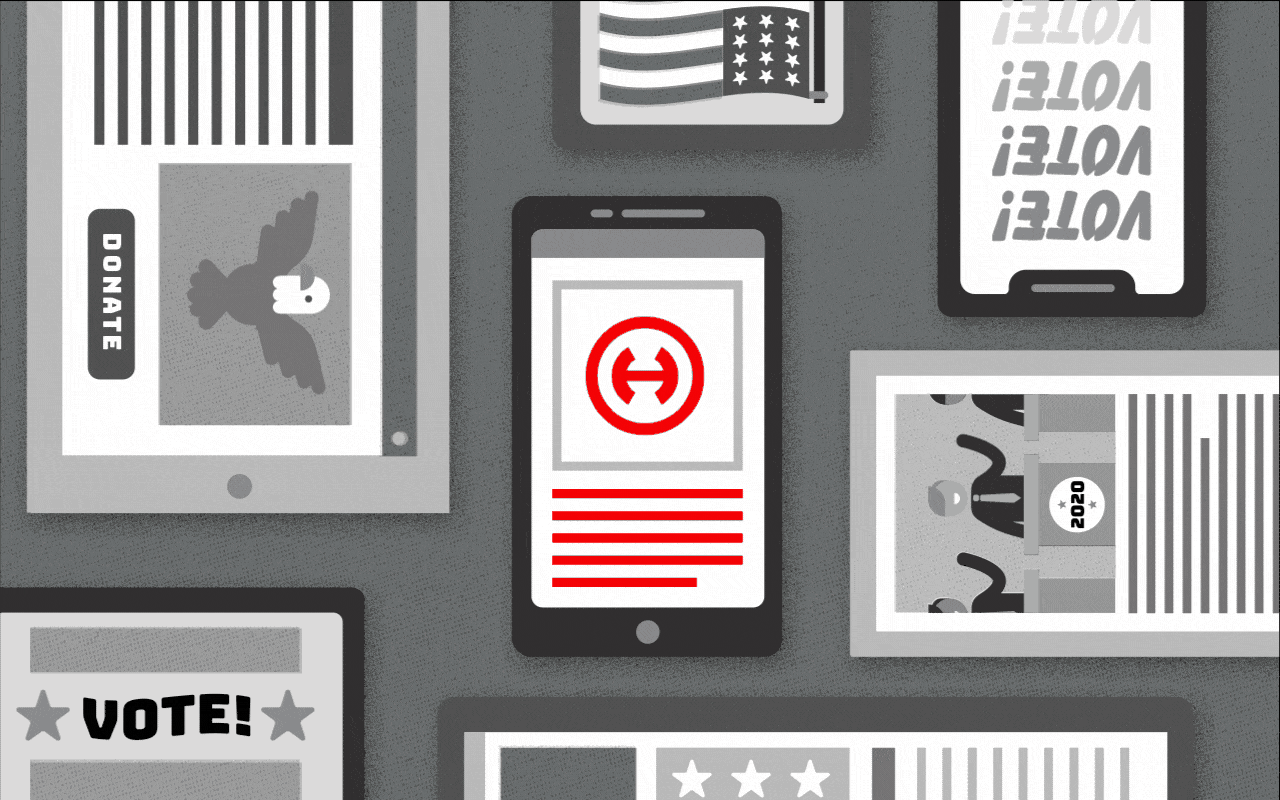As the political atmosphere heats up with the approaching 2020 elections, the broadcast industry is expecting a record year and projecting more than $3 billion in national political spend.
Broadcast and cable won’t be the only beneficiaries of the political windfall, though. Digital ad spend is projected to crack the $1 billion mark in national political spending.
Programmatic advertising — using automation in buying and selling media — will be a large piece of that pie. With programmatic advertising, political advertisers are able to track and optimize direct-response campaigns like donation pushes and voter registration drives.
Their budgets can also shift quickly toward better performing tactics without lag time, reaching the right audience more efficiently with the help of detailed targeting options.
With this impending shift in political advertising on the horizon, there are implications that all advertisers should consider as they make their own marketing plans for 2020.
Here are a few key highlights of programmatic advertising and how to prepare for them:
- Increasing Cost-per-Thousand Impressions (CPMs)
The growing hunger for programmatic will drive an increase of players in the field purchasing ad inventory in large amounts and for varying lengths of time. What does this mean for non-political advertisers?
The rules of supply and demand dictate that more players in the field scooping up inventory will result in the supply of that inventory becoming scarcer, and therefore the price (CPMs) will increase.
We believe that the closer we get to the 2020 election, the more challenging it will be to meet budget goals with decreasing available inventory and increasing CPMs.
This will likely hit smaller campaigns the hardest, where it may already be a challenge to reach goals with tight budgets. Advertisers should develop a game plan early, so they aren’t caught between a rock and a hard place.
For some, it could be as simple as shifting their campaign flights out of the election window to avoid the worst. When that’s not feasible, there’s value in taking a diversified tactic approach and considering media vehicles like influencers or outdoor opportunities that aren’t hotbeds for political ads.
- Growth of Spending on Private Marketplaces
Private marketplaces, or PMPs, are another element to watch closely in 2020. PMPs are attractive to advertisers because they offer access to more premium inventory and better control over brand safety than open exchanges.
As a result, spending on PMPs has been growing at a faster rate than spending on open exchanges and some are predicting 2020 is the year spending on PMPs will surpass that of open exchanges.
Next year, the role of PMPs for non-political advertisers will be even more critical for accessing premium inventory that could be gobbled up by political advertisers on the open market. Programmatic guaranteed (PG) deals will also be a bigger player as they guarantee the inventory needed and remove the worry about missing budget goals.
- Political Advertisers Are Looking for Programmatic Talent
As if finding and keeping rockstar talent for your digital team wasn’t difficult enough, now brands will have to contend with poaching from political advertisers.
Programmatic advertising only continues to grow, with forecasts in 2018 of 80% of digital display being bought programmatically, and predictions in 2019 increasing that amount to 85%. With this holistic growth of programmatic buying over the past few years, it is not surprising that political advertisers would also shift their dollars into the space.
The entry into a new space means political campaigns will be looking for new talent with the skills to execute stellar programmatic buys. Non-political advertisers may need to work harder to find and keep the right people on their own teams.
Brands need to be proactive either by recruiting and retaining programmatic experts for an internal team or exploring outside partners to handle executions on their behalf.
2020 will be a turbulent year for advertisers. Factors like seasonality, budget size and target audience will be subject to influence from political campaigns, and advertisers should expect fluctuations in available inventory, potential spend and campaign performance.
Buyers will need to account for potential CPM increases when planning campaigns, strategize whether a PMP or PG deal may be needed to meet a campaign’s goals, and be more cognizant of the brand safety levers needed if there is sensitivity around aligning with political content.
Advertisers should anticipate the need to be flexible where it makes sense, whether that’s shifting flights to avoid the worst weeks or layering in additional tactics — digital or traditional — to lessen the impact, all while keeping in-flight communication frequent with media partners.
If you want to prepare your digital media strategy for the upcoming election year, we want to help. Simply connect with Ted at tjun@hiebing.com to get the ball rolling.
